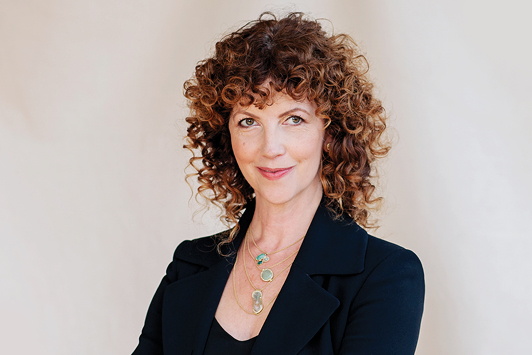
Monica Stephenson is one of the founding partners of the Moyo Gems project, which helps Tanzanian women miners bring their colored gemstones directly from mine to market with full traceability. At least 30% of global artisanal miners are women, according to Stephenson, who refers to them as “the invisible backbone of the jewelry industry.” Through education, Moyo Gems empowers female miners to work safely, mine better, achieve financial security and create a stable marketplace for fair trade. As a result, Moyo miners make 95%, on average, of the export price of the gems they produce.
What made you decide to specialize in ethically sourced gemstones and go directly to the mines?
When I traveled to east Africa in 2014 for a documentary film, I was really moved by how hard the artisanal miners were working. Over 80% of the world’s colored gemstones come from artisanal and small-scale sources, and I could not believe how passionate these miners were, but yet were not participating fully in the gemstone trade. I thought I could create a business model that buys rough gems (faceted when possible) in Tanzania and Kenya, and then reinvests 10% of sales back into those communities in the form of education (primary and trade schools) and entrepreneurial initiatives. I became an “accidental dealer,” because in 20-plus years in the jewelry industry, I never envisioned myself as a gem dealer, let alone one that goes directly to the source. It takes a certain amount of naivety to think you can pull that off! After this trip, in 2015, [my company] Anza Gems was born.
What were the challenges in setting up an initiative like Moyo Gems?
We wanted Moyo to be a sustainable market system, built around the needs of the women miners of the Tanzania Women Miners Association (TAWOMA). We wanted to shorten the supply chain radically. However, we understood that eliminating local brokers would have an unintended consequence [of causing] animosity toward the market and the women who participate. So we involved local brokers who were chosen by the women for their fairness, and this has proven to be successful in terms of community support. Moyo Gems has been a multi-year and supreme group effort by the collaborating partners, from its formation to discussions with TAWOMA, [and from there] to involving the local Tanzanian government, holding “Market Days” in which women travel to a central location to sell their goods, marketing their faceted gems, and navigating the challenges in mining communities during the pandemic.
How has Covid-19 affected the Moyo Gems project and the female miners of the country’s Umba Valley?
Covid-19 shutdowns have been devastating to artisanal miners in Tanzania. International buyers left in early 2020, and there has been very little gem trade happening since. The economy is mostly subsistence and mining, so many people mine just enough to feed their families in a given week.
One way that designers, retailers and others in the US helped in the past year was through donations to Gem Legacy, a nonprofit that usually supports education and vocational training in east African mining communities. In 2020, Gem Legacy focused on providing food staples and Covid-19 prevention information, and more than 60 miners in the Tanga region received some aid. The other way people helped was through buying the Moyo Gems. No travel to Tanzania meant we had to come up with an alternative to our in-person Market Days. Through the incredible dedication of our local partners [at international development NGO] Pact in the Tanzania office, and TAWOMA, we held two remote Market Days — in late 2020 and early 2021 — that allowed us to buy the miner’s gems and infuse some much-needed money into the region.
The Moyo collaboration offers an exciting model for short supply chains. Do you think it can be easily replicated in other countries? If so, how would that work?
The idea of shortening the supply chain in a way that directly benefits the miners is a win-win, both for the artisanal miners involved and for the efficiency and traceability aspects of the market.
“Easily replicated” is a big phrase, but we did set up Moyo Gems to be a model or pilot that could be rolled out into other regions. Similar to the Tanga region, we would want to build from a base of some gemological training, and work with local partners in mining regions elsewhere in east Africa and beyond.
There are some other interesting models out there that are addressing various UN sustainability goals, like the Virtu Gem project started by Responsible Jewelry Transformative founder Susan Wheeler, and Brian Cook’s Bahia initiative in Brazil.
What’s next for Moyo Gems in 2021?
Well, I miss Tanzania terribly, so I hope we can get back to the Tanga region in 2021. We are so happy to have purchased more gems at the remote Market Days, and can’t wait for those gems to be cut by Beth Stier, who facets all of our Moyo Gems. We hope to sell those, [creating] a virtuous circle to allow us to buy more. The Moyo team will continue to plan for ways to support the women miners of Tanga, with more processing opportunities, training and financial empowerment. Moyo allows these women to dream of education for their children, financial security for their families, and increased prosperity for their villages. It’s our dream, too.
Article from the Rapaport Magazine - August 2021. To subscribe click here.